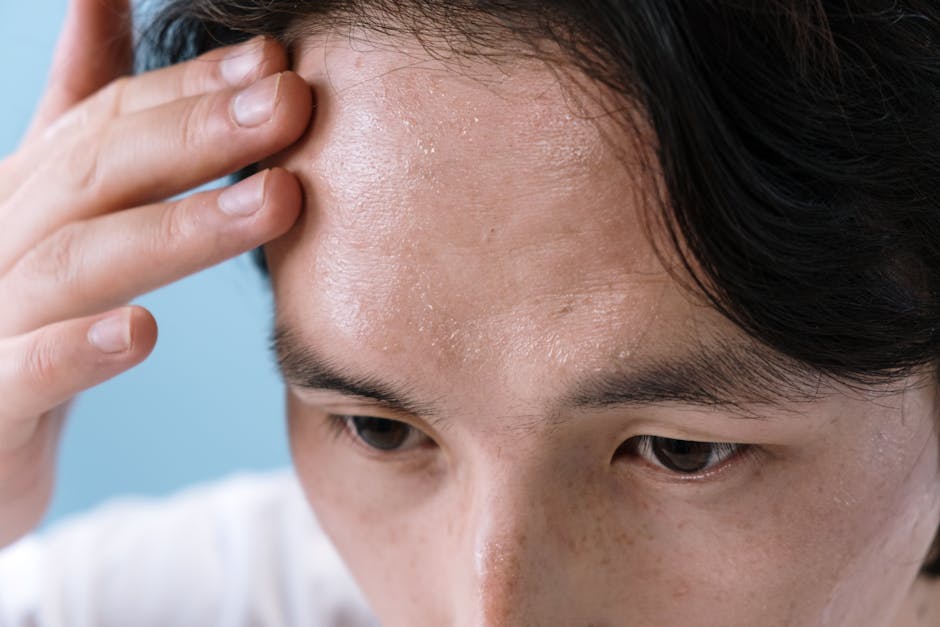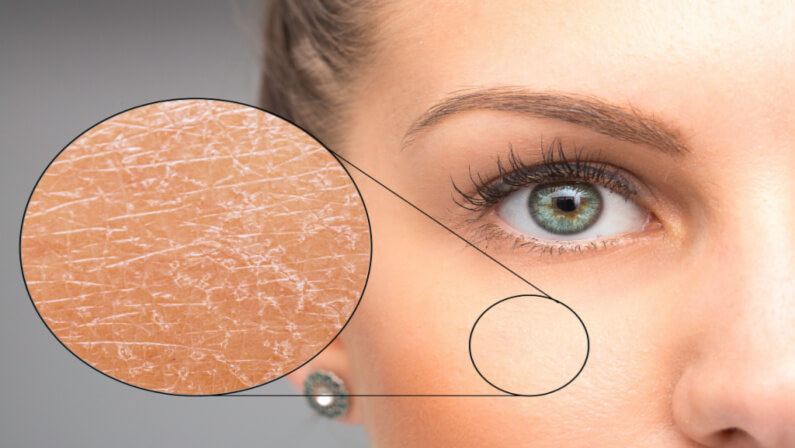Get Your AI Analysis
Personalized skincare insights
Discover your perfect skincare routine with our AI-powered analysis. Get personalized recommendations for glowing, healthy skin.
Start AnalysisFollow Us
Stay updated with the latest skincare tips, trends, and expert advice.
Dry Skin vs. Dehydrated Skin: How to Tell and Treat
Welcome, skincare enthusiasts! As a veteran in this ever-evolving industry, I've seen countless individuals struggle with persistent dryness or tightness, often mistaking one condition for the other. It’s a common misconception that dry skin and dehydrated skin are interchangeable terms, but I’m here to tell you that understanding the nuanced difference is the key to unlocking your skin’s true potential. This isn't just semantics; it's a fundamental distinction that dictates your entire skincare strategy, leading you down the path to genuine relief and a radiant complexion. Are you ready to dive deep and demystify these two pervasive skin concerns?
For years, clients have walked into my clinic complaining of "dry skin," only for us to discover their skin was actually dehydrated, or vice-versa. This misunderstanding often leads to the wrong products, ineffective routines, and continued frustration. Today, we’re going to embark on a comprehensive journey to not only differentiate between dry and dehydrated skin but also equip you with the knowledge and tools to effectively treat each condition. Get ready to transform your understanding and, more importantly, your skin!
Understanding Dry Skin: The Oil Deficit
Let's start with dry skin. This is a skin type, not a temporary condition. When we talk about dry skin, we're referring to skin that naturally lacks sufficient oil (sebum) production. Your sebaceous glands, which are responsible for producing the natural oils that keep your skin supple and protected, are simply not as active as they are in other skin types.
The skin barrier, a crucial protective layer, relies on these natural oils (lipids) to function optimally. Without enough sebum, this barrier can become compromised, leading to various symptoms. According to a study published in the Journal of Clinical and Aesthetic Dermatology, dry skin affects a significant portion of the global population, with prevalence rates varying but often cited between 20-30%, and can increase with age due to decreased sebaceous gland activity.
How to Identify Dry Skin:
Texture: Feels tight, rough, sometimes scaly or flaky. Your skin might feel 'parched' all the time.
Appearance: Dull, lacks natural radiance, fine lines are more prominent. You rarely, if ever, experience oiliness or visible pores.
Sensations: Prone to itching, irritation, and redness, especially after cleansing or exposure to harsh environmental factors.
Pores: Barely visible, if at all.
A simple test: observe your skin an hour after cleansing without applying any products. If it feels tight, uncomfortable, and looks dull, you likely have dry skin.
"True dry skin is a lifelong companion for many, characterized by a fundamental lack of lipids. It requires consistent support for its barrier function, which means incorporating rich, emollient products that mimic the skin's natural oils," advises Dr. Ava Shamban, a board-certified dermatologist.

Understanding Dehydrated Skin: The Water Deficit
Now, let's talk about dehydrated skin. This is a skin condition, meaning it can affect any skin type – even oily or combination skin. Dehydrated skin specifically lacks water, not oil. Your skin might be producing enough sebum, but it's losing water rapidly, often due to a compromised skin barrier.
This loss of water, known as transepidermal water loss (TEWL), is a critical indicator. Environmental factors, lifestyle choices, and even incorrect product usage can strip the skin of its essential moisture. Research indicates that various factors like central heating, air conditioning, harsh cleansers, excessive sun exposure, and inadequate water intake contribute significantly to skin dehydration. A survey by the American Academy of Dermatology suggests that up to 75% of individuals experience some degree of skin dehydration at certain times of the year or in response to environmental stressors.
How to Identify Dehydrated Skin:
Texture: Can feel tight, especially after cleansing, but might still have an oily or combination feel on the surface. It often feels 'papery' or thin.
Appearance: Dull, shadowy under the eyes, and can show exaggerated fine lines (dehydration lines) more prominently.
Sensations: Itchiness, sensitivity, and sometimes a feeling of 'rawness.' Interestingly, it can often feel oily and dry at the same time, leading to breakouts and tightness simultaneously.
Pores: Can still be visible, and you might even experience breakouts, making it confusing if you also feel 'dry.'
The 'pinch test' is a great indicator. Gently pinch a small area of skin on your cheek or the back of your hand and hold for a few seconds. If it takes a moment for the skin to spring back into place, it's a sign of dehydration.
"Dehydration is a widespread concern, often mistaken for true dryness. It's a temporary state that signifies a lack of water, not oil. Focusing on humectants and barrier-supporting ingredients is crucial to replenish and lock in moisture," explains Dr. Loretta Ciraldo, a board-certified dermatologist and founder of Dr. Loretta Skincare.

The Crucial Difference: A Quick Comparison
To truly solidify your understanding, here's a quick comparison:
Dry Skin: Lacks oil. It's a skin type. Often feels rough, tight, and flaky. Pores are small.
Dehydrated Skin: Lacks water. It's a skin condition. Can feel tight but still be oily. Looks dull, might show more pronounced fine lines, and can affect any skin type.
It's also important to note that you can have both dry and dehydrated skin simultaneously, making the issue more complex and requiring a multifaceted approach.

Targeted Treatments and Skincare Routines
Treating Dry Skin (Lacking Oil)
The goal here is to replenish lipids and strengthen the skin barrier with emollients and occlusives.
Gentle Cleansing: Opt for cream or oil-based cleansers that don't strip natural oils. Avoid foaming cleansers.
Key Ingredients:
Ceramides: Essential lipids that form the skin barrier. Look for products like CeraVe Moisturizing Cream or Paula's Choice Clinical Ceramide-Enriched Firming Moisturizer.
Fatty Acids & Cholesterol: Other vital components of the skin barrier.
Squalane & Shea Butter: Excellent emollients that provide rich nourishment. Biossance 100% Squalane Oil or Kiehl's Ultra Facial Cream are great choices.
Glycerin & Hyaluronic Acid: While primarily humectants, they also offer crucial hydration.
Rich Moisturization: Use thick, emollient creams and balms. Apply them liberally after cleansing while skin is still damp to lock in moisture.
Face Oils: Incorporate nourishing face oils as the last step in your routine to seal in moisture and provide extra lipids. Think Rosehip Oil or Jojoba Oil.
Treating Dehydrated Skin (Lacking Water)
The focus here is on replenishing water and preventing further transepidermal water loss.
Hydrating Cleansing: Use gentle, non-foaming, hydrating cleansers. Avoid harsh sulfates.
Layering Hydration: Apply hydrating toners, essences, and serums generously.
Key Ingredients:
Hyaluronic Acid (HA): A superstar humectant that attracts and holds up to 1000 times its weight in water. Serums like The Ordinary Hyaluronic Acid 2% + B5 or SkinCeuticals HA Intensifier are excellent.
Glycerin: Another powerful humectant, often found in most hydrating products.
Squalane: While an emollient, it also helps seal in water.
Niacinamide (Vitamin B3): Helps improve barrier function, reducing TEWL. Paula's Choice 10% Niacinamide Booster is a cult favorite.
Polyglutamic Acid: A newer humectant, even more potent than HA for some. Try The INKEY List Polyglutamic Acid Serum.
Seal with a Moisturizer: Even if your skin is oily, you need a lightweight moisturizer to create an occlusive layer to prevent water from escaping. Gels or light lotions work well, such as Neutrogena Hydro Boost Water Gel.
Lifestyle Adjustments: Drink plenty of water (internal hydration is key!), use a humidifier, and avoid very hot showers.

Expert Insights and Prevention Strategies
Understanding the mechanisms behind dry and dehydrated skin allows for a more proactive approach to prevention. It's not just about treating symptoms but building resilience.
"A healthy skin barrier is your first line of defense against both dryness and dehydration. Protecting it from harsh elements, over-exfoliation, and using ceramides regularly can dramatically improve skin health and comfort," emphasizes Dr. Ranella Hirsch, a respected dermatologist and past president of the American Society of Cosmetic Dermatology and Aesthetic Surgery.
Universal Tips for Healthy Moisture Balance:
SPF Daily: Sun damage compromises the skin barrier, increasing both dryness and dehydration. Use a broad-spectrum SPF 30+ daily, like EltaMD UV Clear Broad-Spectrum SPF 46.
Avoid Over-Exfoliation: While exfoliation is beneficial, excessive use of AHAs/BHAs can strip the skin and impair its barrier. Stick to 2-3 times a week, maximum.
Hydrate from Within: Drink sufficient water throughout the day. While its direct impact on skin hydration is debated, overall bodily hydration is crucial for cellular function.
Humidifier: Especially in dry climates or during winter, a humidifier can significantly help retain moisture in your skin and environment.
Diet: Incorporate healthy fats like Omega-3s (found in fish, flaxseed) which support skin barrier health.
Temperature Control: Avoid excessively hot showers or baths, which can strip skin oils and accelerate water loss.
Think of your skin barrier as the roof of your house. Dry skin means you're missing some essential roofing materials (lipids), leading to a leaky roof. Dehydrated skin means the house isn't getting enough water (internal hydration), or the existing roof has holes (compromised barrier) allowing water to evaporate. Sometimes, you need to fix both the roof and ensure adequate water supply.

